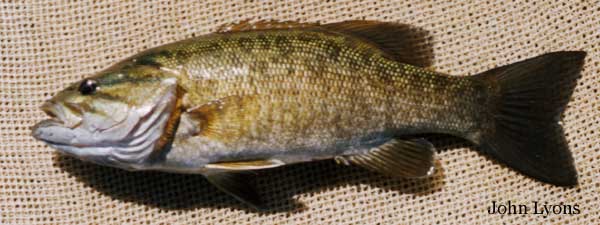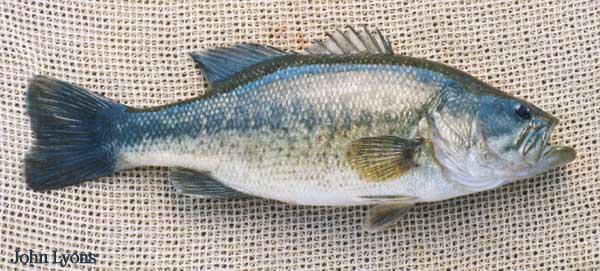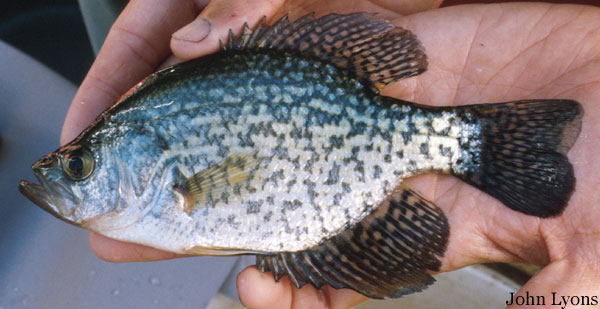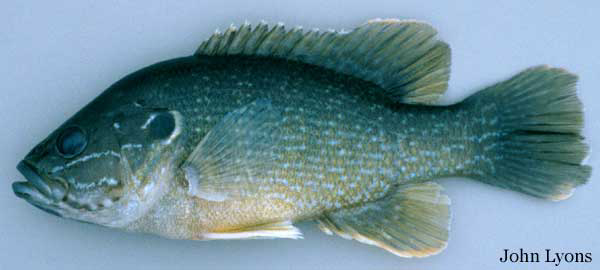Angling in Northern Wisconsin
Angling in the multitude of lakes and streams in Northern Wisconsin can be a very enjoyable and satisfying experience. While it may not be the same as catching 50 lb. chinook salmon in Alaska, fishing in Wisconsin has its own rewards. Generally, fishing with light tackle will make fishing not only more sporting but more entertaining. In Carpenter Lake, it is unusual to catch fish above 10 lbs and would be unlikely to catch a fish above 20 lbs. Therefore, a 7 ft stiffy with 25 lb test is overkill. We find that the fish species in Carpenter Lake are much cuter with their lips! There are 26 species of fish in Carpenter Lake. Only about 8 species are traditionally caught for sport or food. These species are the northern pike, largemouth bass, smallmouth bass, walleye, pumpkinseed, bluegill, yellow perch and crappie. Below is the summary of each species and a picture of the fish, seasons, limits and size requirements. As well as some recipes for each fish.
Often overlooked for eating because of its unique bone configuration, the northern pike is a strong fighter and can get quite large (up to 45 in, 25 lbs). Once you have mastered the removal of the Y-bones (see article for instructions) they are quite tasty. Pike possess large teeth and are what is known as a sit and wait predator. What this means is that pike do not actively cruise the lake for food but strike viciously when something that remotely resembles food passes by their duck-like proboscis. They mainly feed on other fish but are willing to take about anything if they are in the right mood. If pursuing pike, you may want to start with a steel leader to prevent premature lure loss. If using artificial bait, some local favorites include Rapalas (blue/silver, blue/white, black/silver, black/white), Mepps Aglia #4-#6 silver or a Mepps Black Fury (yellow dots). Bait fishing can be good with a large live lake shiner or chub from a bobber. When you get a pike to the vessel, it would be wise to have a pair of needlenose pliers to remove your hook or you will end up with more holes in your finger than a GOP tax-cut plan.

Bass, particularly largemouth bass are the most commonly pursued game fish in North America. This is for good reason, bass fight well and they are really stupid. Bass are like Bear's fans. They never remember the last time they got beat down, so they go after the prize again and again. Just as this is good for the Packer's, it is good for the fisherman. Many people do not care to eat bass so they practice catch-and-release and let them back in the water for their next beat-down, which could be you. Preferred methods of angling for bass include using Mepp's Black Fury (red dots), Mister Twisters (1/4 oz jighead, black, yellow and white tails are usually good), rubber worms or buzz bombs and propeller baits. Good bait can include nightcrawlers, frogs, crawdads, and chipmunks. When you hook a bass always take care to keep tension on your line because bass will give you a better jumping show than Michael Jordan as a Wizard. When they jump they try to shake the hook loose and good line tension prevents this. Contrary to popular belief, bass make fine table fare if taken with a good amount of dry white wine or a generous quantity of pilsner. It should be noted that although most southern bubbas love their largemouth bass, most Yanks know that the smallmouth bass is the superior pound-for-pound fighter.


Ah, walleye, the prize fish of the North Woods. Why you ask? Because it is a gigantic perch with better night vision. That means not only does it taste really good and have larger fillets, its just as easy to catch day AND night. What more could you ask for besides a challenge? Of course due to their scrumptiousness, anglers have removed them from Carpenter Lake disproportionately to their potential for replacement so they are not quite as easy to catch as they used to be. But they are out there, oh yes, and the Dave Hanselman favorite is called an Erie Dearie which is basically just a nightcrawler harness with a fancy lead-head. You could definitely pick up a walleye fishing for either of the above fish as well. Of course if you do get a walleye, you will probably keep it and want to eat it. Try this recipe (link).

The ice fisherman's friend. These little par-marked butterballs can be nabbed by the hundred during ice fishing season in the winter. In the summer however, you usually catch larger perch (8-12 in) while casting for bass or pike, and get smaller ones when panfishing.

Crappie are well, crappy. They have practically taken over the prime beer drinking hour of dusk and can be spotted rising to the surface as if there was a geothermal vent beneath or lakeside septic leak. So the angler in a skiff targeting crapeyes would look for this. Crapeyes are most commonly taken with Mister Twisters (small 1/8 oz head) and little bucktail jigs. Crappie can get fairly large for a panfish and a good batch of these can make an excellent vehicle for butter and garlic.

These relatives generally make up the greatest proportion of the panfish complex and actually are quite good fighters on light tackle. But these are usually left for the kids to practice on before they go out with the men. You don't want them in the boat when they are still setting the hook into you or the dog's ear.
For Wisconsin fishing regulations go to:
For an excellent guide on fish identification visit:

